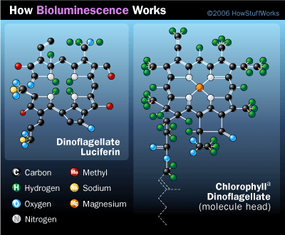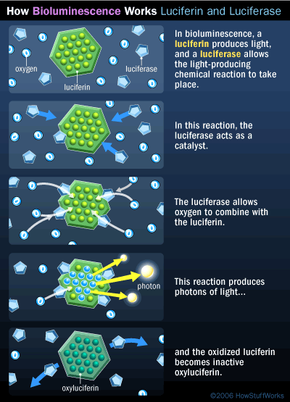How Animals Make Light
In general, bioluminescence involves the combination of two types of substances in a light-producing reaction. One is a luciferin, or a light-producing substance. The other is a luciferase, or an enzyme that catalyzes the reaction. In some cases, the luciferin is a protein known as a photoprotein, and the light-making process requires a charged ion to activate the reaction. Neurological, mechanical, chemical or as-yet-undiscovered triggers can start the reactions that create light.
Often, the process requires the presence of other substances, like oxygen or adenosine triphosphate (ATP). ATP is a molecule that stores and transports energy in most living organisms, including the human body. The luciferin-luciferase reaction can also create byproducts like oxyluciferin and water.
Advertisement
The terms luciferin and luciferase both come from a Latin term lucifer, which means "light-bringer." They are generic terms rather than the names of particular chemicals. Lots of different substances can act like luciferins and luciferases, depending on the species of the bioluminescent life form. For example, the luciferin coelenterazine is common in marine bioluminescence. Dinoflagellates that obtain food through photosynthesis use a luciferin that resembles chl. Their luminescence is brighter after very sunny days. Some shrimp and fish appear to manufacture their luciferin from the food they eat.

Not all animals produce their own light. Read on to learn about animals that rely on other life forms for their luminescence and about how living light can be helpful to humans.
